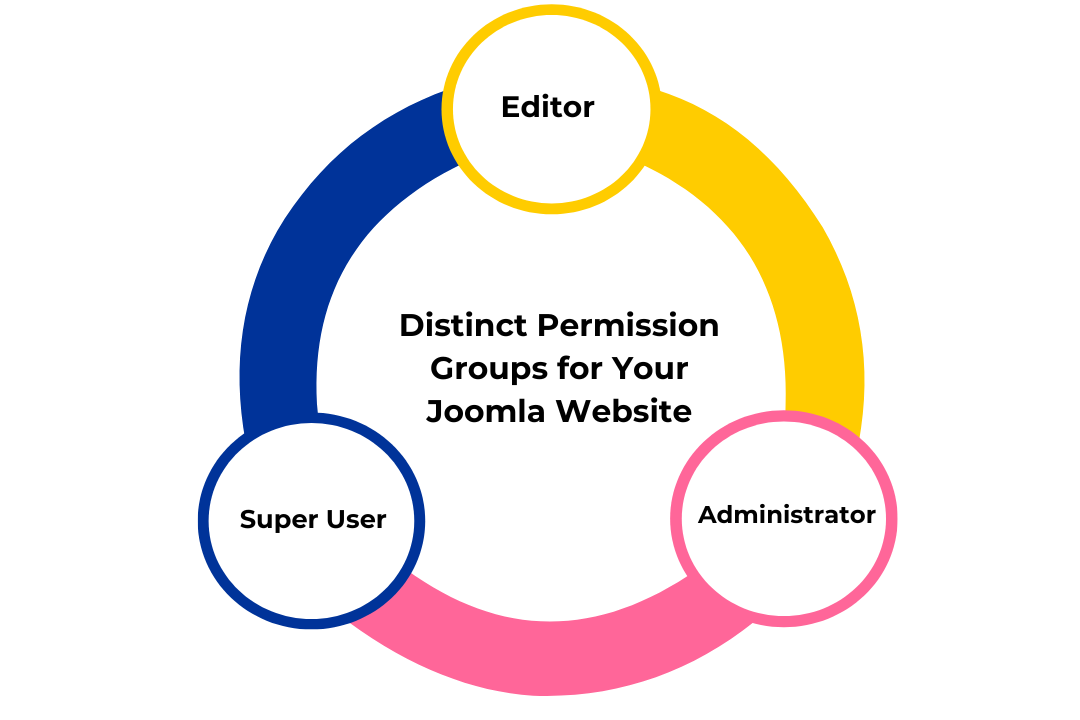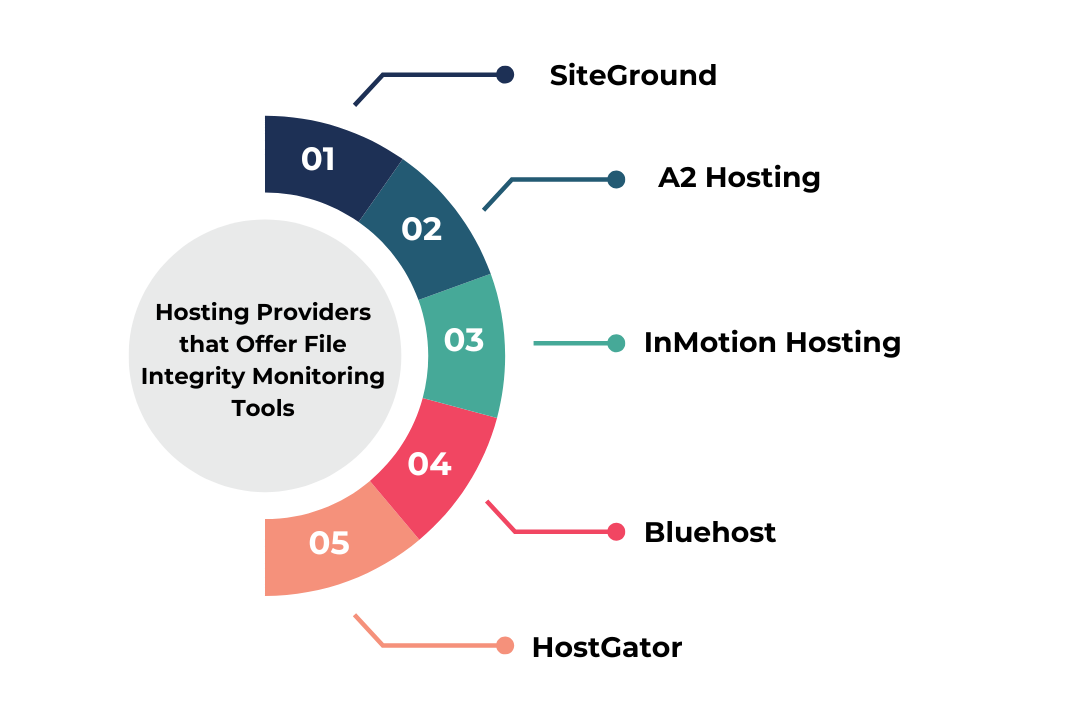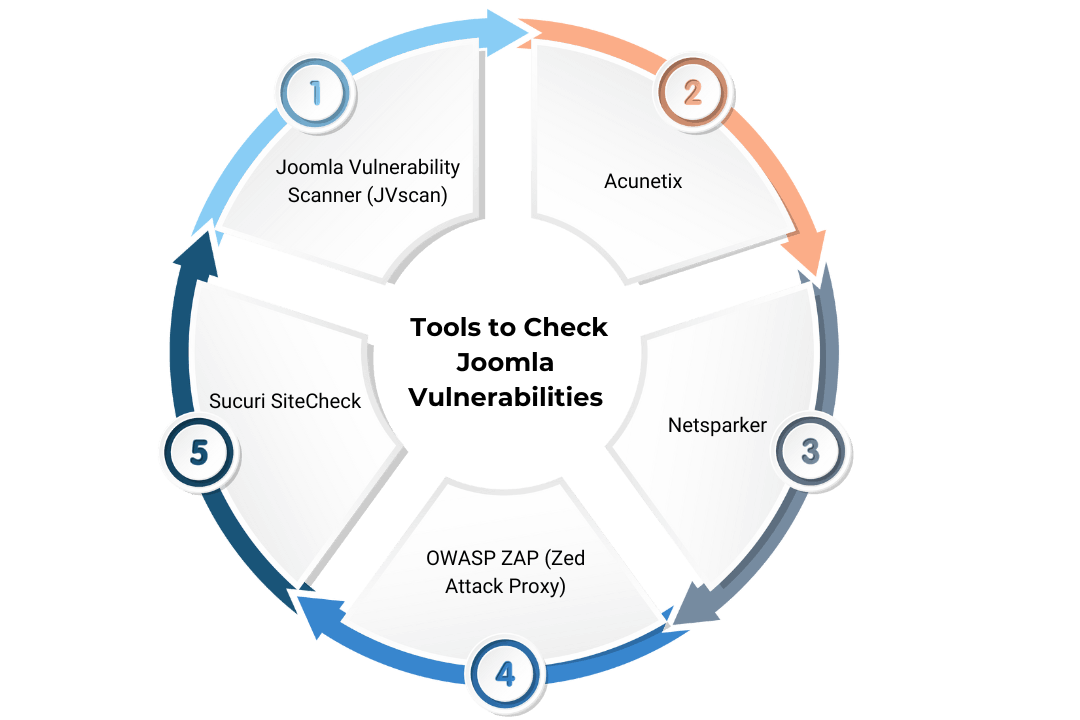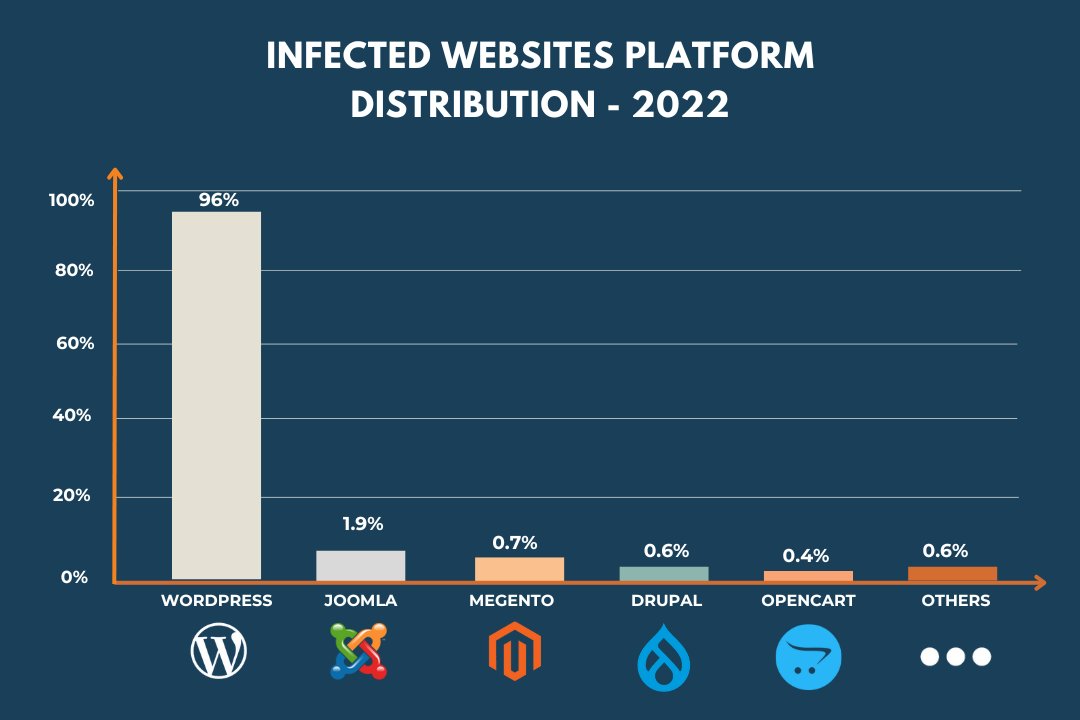Joomla is an open-source CMS and the second most popular platform worldwide. With over 134 million downloads, Joomla is the choice for countless websites and empowers them to craft dynamic and engaging online experiences.
With this power comes a responsibility: safeguarding your website from security threats. And in this internet era, robust website security is no longer optional; it’s essential.
As a Joomla user, you must have adopted and implemented every sophisticated measure to make your website resilient to a cyber-attack. But think aloud: Are these security measures good enough to beat today’s advanced hackers?
Joomla is possibly one of the most secure website-building platforms today, but even with its advanced security features, it often becomes vulnerable to security loopholes.

Therefore, we have created this article to fortify your website against potential attacks. Here, we’ll discuss techniques to make your Joomla website stand firm and curb cyber-attacks likely to damage your business website.
From keeping your Joomla core and extensions updated to implementing strong user authentication measures, we’ll cover essential strategies, unveil best practices for securing your Joomla website, and ensure a safe space for visitors and content.
So, whether you’re a seasoned Joomla user or just starting out, these actionable steps will equip you with the knowledge to secure your website and achieve peace of mind.
But let’s first understand more about the security features of your Joomla site.
How Secure is Your Joomla Website?
Joomla is a relatively secure content management system (CMS) when appropriately managed. Its core is built with features like two-factor authentication.
So, whether you build a blogging, business, educational, or eCommerce website, you should know that security is the paramount feature of Joomla.
[Also read: 10 Live Examples of Websites Using Joomla]
Additionally, a large community also helps identify and address vulnerabilities. Joomla’s security features, such as regular updates and a robust user authentication system, contribute to its overall security posture. However, its open-source nature makes it a target, and extensions can introduce risks.
Like any web platform, Joomla’s security is only as strong as the measures taken by website administrators. Security loopholes like vulnerable codes, misconfiguration, and lousy hosting may invite hackers to attack your Joomla site.
| Joomla, the second largest CMS platform after WordPress, is also the second most infected website development platform globally.
[Source: Sucuri] |
The report generated by CVE details clearly conveys that a total of 440 vulnerabilities have been discovered against Joomla, and that’s only for the Joomla core. The report doesn’t capture the extensible components hacks that impact its security patches.
Hence, while Joomla provides a solid foundation for website security, proactive management and adherence to best practices are essential for maintaining a secure Joomla website. Let’s explore the key steps to enhance the security of your Joomla-powered web presence.
8 Best Practices to Secure Your Joomla Website
| Joomla’s security is a double-edged sword. On one side, it offers power-packed security measures to combat common attacks. On the other, it is shielded by active community members who contribute by reporting potential vulnerabilities and continuing to work on solutions. |
Like any other platform, your Joomla website also requires continuous vigilance. Nevertheless, you can significantly handle the security lapse and the risk of your site compromise by following these 8 best practices mentioned below:

1.Keep Joomla Core and Extension Updated
This might sound like a no-brainer, but it’s surprisingly common to overlook updates. Keeping Joomla updated is crucial for maintaining your website’s security and functionality.
Joomla regularly releases updates that include patches for known vulnerabilities, bug fixes, and enhancements to security features.
By keeping your Joomla core installation, themes, and extensions up to date, you ensure your website is equipped with the latest security patches, reducing the risk of exploitation by malicious actors.
To check whether your Joomla website is up-to-date, follow the steps given below:
- Step 1: Log in to your Joomla website as administrator by using your ID and password
- Step 2: Go to Components and click on Joomla Update
- Step 3: Joomla will now check for any latest updates. After a few minutes, if Joomla comes up with the latest update availability, click on “Install the Update” and wait until the process ends.
Updated versions of Joomla also often include improvements in performance, compatibility with newer technologies, and new features that enhance the overall user experience.
Latest Joomla Versions that include Security Patches!
|
Regular updates and prompt application help keep your Joomla website secure, stable, and up-to-date with industry standards.
2. Fortify Your Login Credentials
Using strong passwords is a priority for securing your Joomla website. The default “admin” username and a weak password are open invitations to trouble.
A hacker can easily use the Brute-Force attack method and access your website’s login details before you even consider securing it.
Strong passwords are typically long (8-14 characters) and complex. It must include a combination of alphanumeric characters, uppercase and lowercase letters and special characters.
They should be unique for each user account and avoid easily guessable information such as common words, phrases, or personal details.
For an added security layer, consider implementing two-factor authentication (2FA) or Multi-Factor Authentication (MFA).

[Source: Joomla]
The 2FA security patch requires users to provide a second form of verification alongside their password to access their accounts. With an enabled MFA, even if an attacker obtains your password, they’ll be thwarted without the additional code.
3. Limit User Permission
Limiting user permissions is crucial for enhancing the security of your Joomla website. Restricting users to specific tasks and permitting them only for the tasks they need to perform reduces the risk of potential security breaches and unauthorised user access.
For example, granting administrative privileges only to trusted users who require them for website management tasks can prevent unauthorised changes to critical settings or content.
Thus, you can sub-categorise user permissions based on specific usage and job roles. The “Super User” has a master key that opens all doors, but other user roles can be assigned more restricted access.
For instance, an “Editor” might have a key that opens the content creation room but not the settings room. At the same time, the “Administrator” possesses all the permissions that the editor has, plus some additional user rights.

This principle of least privilege ensures that users can only perform actions relevant to their role, minimising the damage a compromised account can cause and preventing unauthorised modifications to critical areas of your Joomla website.
4. Secure Hosting Environment
A secure hosting environment protects your Joomla website. When choosing a hosting provider, be specific about what you need to safeguard your website. Opt for one that offers robust security measures such as intrusion detection systems (IDS), firewalls, malware scanning, and regular security updates.
Look for providers that offer features like:
- Firewalls: These act as digital walls, filtering incoming traffic and blocking malicious attempts to access your website.
- Intrusion Detection Systems (IDS): These systems constantly monitor your website for suspicious activity and alert you to potential attacks.
- Secure Server Configuration: Your server’s configuration can significantly impact security. A secure host ensures proper settings are in place to minimise vulnerabilities.
A secure hosting environment protects your website at the server level, safeguarding against common threats such as DDoS attacks, SQL injection, and unauthorised access attempts.
Additionally, ensure that your hosting provider follows best practices for server security, such as regular security audits, timely patching of software vulnerabilities, and secure server configurations.
By hosting your Joomla website in a secure environment, you minimise the risk of security breaches and provide a safer experience for your website visitors.
5 . Enable SSL Encryption
Enabling SSL (Secure Socket Layer) encryption is another vital step in strengthening the security patch of your Joomla website.
SSL is a shield that encrypts the data transmitted between your website and visitors.
It ensures that sensitive information, such as payment details, credit card information on checkout points, log credentials, and Personally Identifiable Information (PII), is protected from interception by malicious actors.
This encryption is crucial for websites that handle sensitive information or conduct online transactions. By implementing SSL, you create a secure connection that not only protects user data but also improves trust and credibility among your audience.
Visitors can easily identify a secure website by its padlock icon in the browser address bar and HTTPS in the URL, which signals that their data is encrypted and safe during transmission.
| To make sure that all your HTTP traffic is redirected to HTTPS, append the following code to your Joomla website’s .htaccess file:
# Redirect HTTP to HTTPS RewriteEngine On RewriteCond %{HTTPS} off RewriteCond %{HTTP:X-Forwarded-Proto} !https RewriteRule ^(.*)$ https://%{HTTP_HOST}%{REQUEST_URI} [L,R=301] [Source: localhost] |
Most hosting providers offer SSL certificates, and many Content Delivery Networks (CDNs) also provide SSL support, making it easier than ever to implement SSL encryption for your Joomla website.
6. Regular Backups
Regular backups are essential for the resilience and security of your Joomla website. Backing up your website’s files and database regularly ensures that you have a copy of your website’s data in case of data loss due to hardware failure, security breaches, technical issues or accidental deletion.
The frequency of backups depends on how often your website content changes. Hence, there are two primary backup components to prevent future mishaps:
- Joomla Files (including all the essential files)
- Joomla Database
There are two ways to backup the above-mentioned Joomla components: manually or by automating the system.
It’s recommended to schedule automated backups at regular intervals, such as daily or weekly, and store backup files securely on separate servers or cloud storage platforms.
Periodic testing of your backups is also essential to ensure they are complete and functional. A backup is only valuable if it can be successfully restored when needed.
Overall, regular backups are crucial for website maintenance and play a critical role in disaster recovery and data protection strategies.
7. Monitor File Integrity
Monitoring file integrity in Joomla is like having a digital watchdog for your website’s files. It involves regularly checking the files and directories of your Joomla website to detect any unauthorised changes or modifications.
This process ensures that your website’s core files, extensions, scripts, and other components remain intact and have not been tampered with by malicious actors.
Monitoring File Integrity is like having a fingerprint for each crucial file on your website.
The file integrity monitoring tools create these “fingerprints” using cryptographic hashes, a unique mathematical code representing the file’s content. The tool then periodically checks these hashes against the originals, alerting you if any discrepancies arise.
There are various tools available to monitor file integrity in Joomla. Some hosting providers offer this functionality as part of their security suite.

You can automate this monitoring process using specialised security tools or third-party extensions and receive alerts or notifications whenever suspicious changes are detected.
Monitoring file integrity is crucial for identifying security breaches, preventing unauthorised access, and maintaining your Joomla website’s overall integrity and security.
8. Implement Security Headers
Implementing security headers in Joomla is like putting up “security signs” on your website.
Security headers are HTTP response headers that instruct web browsers on handling and enforcing security policies for your website, enhancing its overall security. Let us check out some key security headers and their purposes:
- Content Security Policy (CSP): This header allows you to define a whitelist of trusted sources from where the browser can load resources like scripts, images, and stylesheets.
This helps prevent cross-site scripting (XSS) attacks by restricting the sources from which content can be loaded, reducing the risk of malicious scripts being injected into your pages. - HTTP Strict Transport Security (HSTS): HSTS headers instruct browsers to always use a secure HTTPS connection when communicating with your website, even if the user enters the URL with HTTP.
This prevents man-in-the-middle attacks and ensures that all data transmitted between the browser and your server is encrypted and secure. - X-Frame-Options: This header helps mitigate clickjacking attacks by setting X-Frame-Options. Clickjacking tricks users into clicking on an invisible element on a webpage, potentially leading them to perform unintended actions.
This header instructs the browser not to render your website within a frame or iframes of another website, reducing the risk of clickjacking. - X-XSS-Protection: This header can help mitigate Cross-Site Scripting (XSS) attacks. XSS attacks inject malicious scripts into your website that can steal user data or redirect them to harmful websites. This header instructs the browser to be more cautious about rendering potentially risky content.
| Security headers are a valuable tool. However, for a comprehensive Joomla security strategy, they should be used alongside other best practices under the supervision of seasoned Joomla experts.
Want to know how much does it cost to build a Joomla website with security features intact, read here: How Much Does a Joomla Website Cost? |
Best Tools to Check Joomla Vulnerabilities
There are several tools available to check for vulnerabilities in Joomla websites. However, when using these tools, following best practices for vulnerability management is essential. Let us see the list of some crucial tools for Joomla security:

-
Joomla Vulnerability Scanner (JVscan)
JVscan is a dedicated Joomla vulnerability scanner that helps identify security weaknesses in Joomla installations. It scans for known vulnerabilities in Joomla core, extensions, and templates, providing detailed reports and recommendations for remediation.
-
Acunetix
Acunetix is a powerful web vulnerability scanner that supports Joomla websites. It can detect various security issues, including SQL injection, cross-site scripting (XSS), and insecure server configurations, helping you secure your Joomla site effectively.
-
Netsparker
Netsparker is another comprehensive web application security scanner that can detect vulnerabilities in Joomla websites. It offers automated scanning, detailed vulnerability reports, and prioritisation of security issues for efficient remediation.
-
OWASP ZAP (Zed Attack Proxy)
OWASP ZAP is a reliable tool with features for scanning Joomla websites for vulnerabilities. It is an open-source web application security tool that can be used for both manual and automated security testing, making it a versatile choice for Joomla security assessments.
-
Sucuri SiteCheck
Sucuri SiteCheck can scan your Joomla website for free for malware, blacklisting, and known security issues. While it doesn’t provide as comprehensive scanning as dedicated vulnerability scanners, it’s a quick and easy way to check for common security issues.
Pro Tips: Safeguard Your Joomla Website!
|
Conclusion
Adopting best practices to secure your Joomla website is crucial for maintaining the trustworthiness, authenticity and integrity of your online presence. These practices not only protect sensitive data and user information but also demonstrate your commitment to providing a secure environment for your visitors.
While these best practices empower you to take control of your Joomla website’s security, navigating the intricacies of web security can be daunting. Consider partnering with a professional Joomla website development company for comprehensive protection and peace of mind.
A reputable developer company will ensure that your Joomla website is built and maintained with the highest security standards, offering peace of mind and confidence in your online platform’s resilience against cyber threats.














